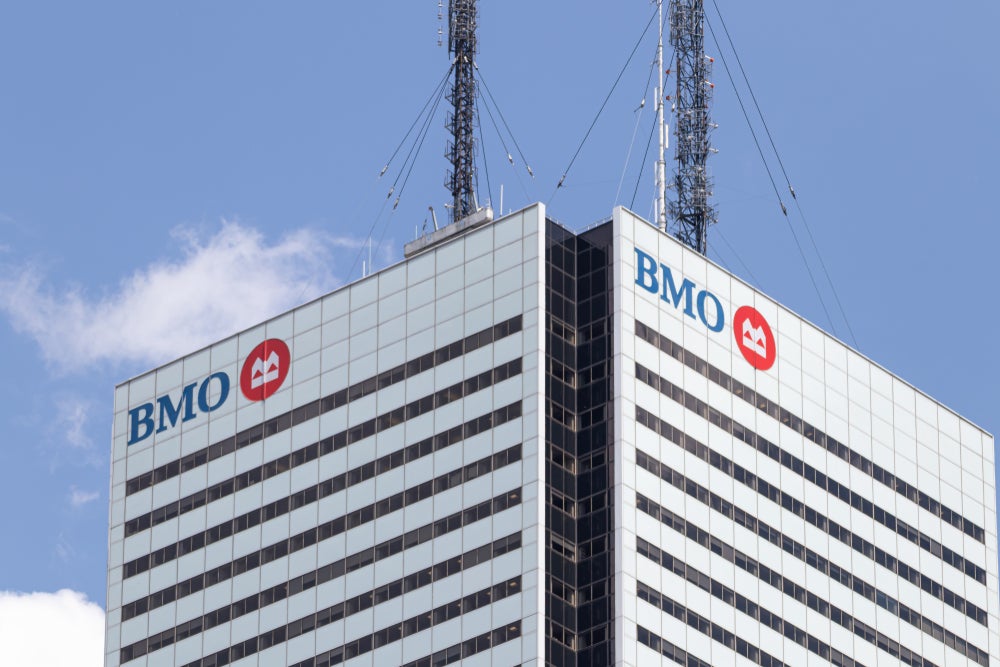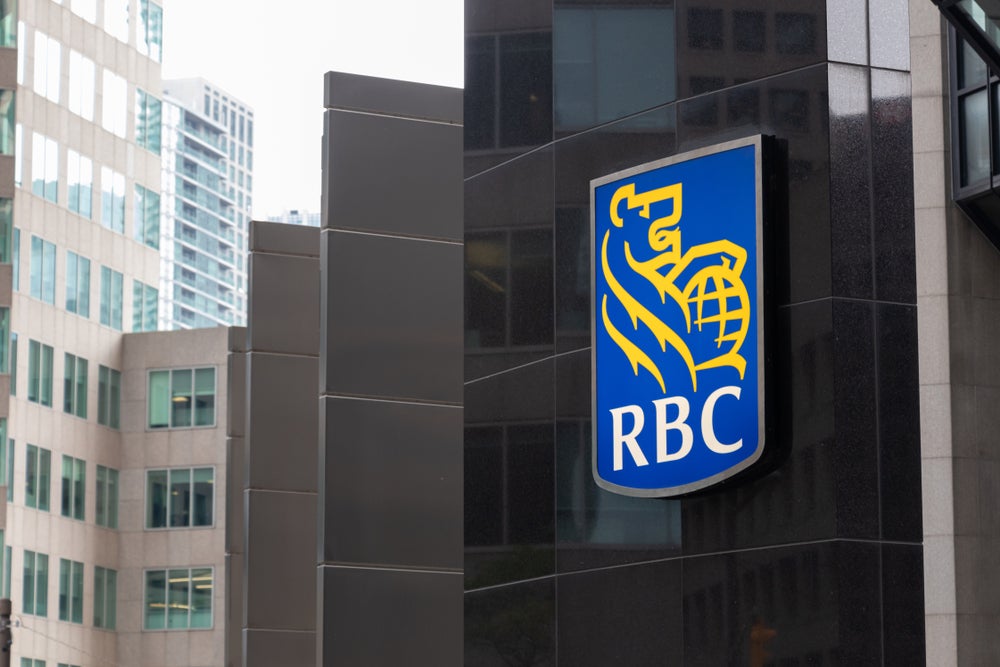Poland has the distinction of being the only economy in
CEE to boast positive real GDP growth in 2009, a strength that
extends to the country’s well-capitalised banks. The retail banking
sector in particular remains attractive to foreign raiders, as
evidenced by Santander’s bid for BZ WBK, writes Douglas
Blakey.
 Not only did Poland
Not only did Poland
avoid falling into recession in 2009 – it posted GDP growth of 1.8%
– it also avoided a single quarter of negative quarterly
growth.
No other country in the European
Union (EU) can make such a claim.
The Polish economy continues to
grow and is expected to hit a solid 3% or 4% in 2010.
The country can also lay claim to
have the most resilient banking sector in Central and Eastern
Europe (CEE), with satisfactory capitalisation a prominent feature
of the industry.
How well do you really know your competitors?
Access the most comprehensive Company Profiles on the market, powered by GlobalData. Save hours of research. Gain competitive edge.

Thank you!
Your download email will arrive shortly
Not ready to buy yet? Download a free sample
We are confident about the unique quality of our Company Profiles. However, we want you to make the most beneficial decision for your business, so we offer a free sample that you can download by submitting the below form
By GlobalData“The factors behind this ‘Polish
miracle’ will probably be the topic of many economic papers for
years to come,” according to Jovan Sikimic, an analyst at
Raiffeissen.
Total lending in EU countries was
flat in 2009 and actually fell in a number of markets. By contrast,
total loans rose by 7.7% in euro terms in Poland, the highest of
any CEE country.
Across the Polish banking sector,
deposits outpaced loans, resulting in the loan-to-deposit ratio
improving by 8%age points to 111.6% as of year-end 2009.
It is a market in which the
Eurozone’s biggest bank, Santander, has long seen as ripe for
investment.
Santander’s strategy to grow its
Polish operations came to the fore in its determination to win the
auction for Allied Irish Banks (AIB) controlling stake in BZ WBK,
the country’s fifth-biggest lender by assets.
Santander’s bid in September for BZ
WBK did succeed – around €4bn ($5.1bn) for a 70% stake – beating
off stiff competition from BNP Paribas and PKO, Poland’s biggest
bank by assets.
Subject to regulatory approval,
Santander will merge its existing operations in Poland (Santander
Bank Polska and AIG Bank Polska) into BZ WBK.
 Santander’s expansion in
Santander’s expansion in
Poland dates back to 2002.
- 2002: Santander
entered the Polish market via the acquisition of German-based AKB,
including its Polish unit; - 2003: Santander
acquired Bank of America Polska; - 2006: Operating
under the Santander Consumer brand, the Polish unit expanded its
product range to cover personal loans as well as auto loans and
payment cards; - 2009: Santander
beat-off competition from Poland-based rivals PKO and Getin to snap
up AIG Bank Polska; - 2010: In June,
Santander’s bid for the Polish arm of AIG was approved. Santander
kicked-off a full integration of its Polish units to form a branch
network of 250 outlets, and - 2010: In
September, Santander’s bid for BZ WBK knocked out rival bids from
PKO and BNP Paribas.
While a number of international
banks have invested heavily in Poland, the level of concentration
in the Polish banking sector remains relatively moderate compared
with other countries in the EU.
At the end of 2009, the share of
the five largest banks in assets, loans and deposits in the banking
sector was 44.5%, 42.7% and 53.9%, respectively.
As for the foreign raiders – the
biggest investors in the Polish banking sector include UniCredit,
KBC, ING, Citigroup, Commerzbank and Portugal’s BCP – their market
share measured by assets, loans and deposits amounted to 68.1%,
68.7% and 66%, respectively at the end of 2009.
Winners and
losers
 If Santander’s winning
If Santander’s winning
bid for BZ WBK represented something of a coup, it was a bitter
blow for the country’s biggest bank, the state-controlled PKO.
In June, Polish finance minister
Aleksander Grad said the government would support PKO’s bid for BZ
WBK.
The same month, PKO’s shareholders
agreed to delay a decision on a dividend for fiscal year 2009,
until its chances of acquiring AIB’s stake in BZ WBK became
clear.
For AIB, the loss of its 70% stake
in the Polish lender – a shareholding widely regarded as the AIB
group’s ‘jewel in the crown’ – represented an unavoidable
reverse.
As a result of its receipt of
bail-out funds from the Irish government, AIB had been forced by
the EU to divest its international assets.
In fiscal 2009, AIB’s Polish
earnings held up, with profits before taxation of PLN854m ($296.8m)
in 2009, down only 8% year-on-year.
AIB entered the Polish market in
1995, when it acquired a non-controlling interest in Wielkopolski
Bank Kredytowy (WBK).
In 2001, WBK merged with Bank
Zachodni to form BZ WBK, following which AIB held a 70.5 per
cent.
Having lost out in the race for BZ
WBK, PKO is expected to seek other targets in the Polish
market.
Raiffeissen analysts have argued
there are a number of intriguing M&A possibilities in
Poland.
Main market
players
PKO BP and UniCredit subsidiary
Bank Pekao remain the clear market leaders in Poland. The assets of
each of Poland’s big two exceed PLN100bn and their total share of
the local banking market exceeds 25%.
In 2007, Pekao briefly overtook PKO
BP – a consequence of taking over most of Bank BPH (resulting from
the acquisition of HVB by UniCredit) – but PKO BP rapidly rebuilt
its leading position and is widening the gap again.
Behind the big two, is a group of
four banks – Commerzbank-owned BRE, Dutch-based ING, BZ WBK and BGK
(a state-owned lender focused on banking services for the public
finance sector) – whose assets each exceed PLN50bn.
PKO BP
BGK’s intention to sell its 10%
stake in PKO BP in 2011 may be expected to kick-start PKO BP’s
privatisation efforts. PKO has said it will follow a more cautious
approach in short-term retail lending this year.
According to Sikimic, PKO “could be
able to beat the market in terms of retail deposits gathering as
soon as the loan market starts picking up”.
So far this market has cooled down
with deposit pricing at around 3%.
PKO enjoyed an extremely strong
second quarter, mainly from payment cards and insurance products;
fees related to lending also rose.
Non-performing loans (NPLs) on the
bank level decreased by 10 basis points to 7.1%, while retail
non-performing loans fell from 8.7% a year ago to 7.6%.
For 2011, PKO is well placed to
defend its market leading position and Sikimic has forecast net
profit of PLN4.3bn and PLN5.4bn in fiscal 2011 and 2012
respectively.
PKO BP was one of only four banks
from CEE to take part in the EU-wide stress test in July 2010.
It was no real surprise that PKO
sailed through the test, recording one of the biggest Tier 1
capital ratios of all of the banks examined.
Bank Pekao
(UniCredit)
Pekao has forecast retail lending
growth of 10% in 2011.
Pekao is expected to benefit from
some above-market sector asset quality and a very successful
cost-control strategy and a strong net interest margin, predicted
to rise to 3.37% by 2012 from 3.17% this year.
“Compared to other banks which
delivered average higher profitability during the second quarter,
Pekao has not impressed but has also not reported poor figures
either,” said Sikimic.
BRE
(Commerzbank)
With a 7.5% market share of Polish
banking assets, BRE is the third-largest bank in the country by
that measure.
BRE has posted optimistic forecasts
as regards retail lending growth, and enjoyed an outstanding 67%
quarter-on-quarter growth in retail lending in the second
quarter.
The sales of BRE’s main product –
mortgages, increased by 84% quart-on-quarter, with the focus on
euro-denominated loans which account for 83% of total sales.
Net interest margin growth of a
modest 7 basis points from 2.0% to 2.07% in 2011 is forecast.
Getin
One negative consequence of
Santander’s successful bid for BZ WBK – from Getin’s perspective –
is an increasingly competitive car financing market.
This a sector where Getin punches
above its weight and is now at risk of suffering a loss of market
share.
While Getin is at risk of higher
loan-loss provisioning for the next two to three quarters, better
risk control should contribute to the stabilisation of the loan
book quality but not earlier than 2011.
Bank Millennium
(BCP)
In contrast to Getin, Bank
Millennium, the Polish subsidiary of Portugal’s BCP, has indicated
to analysts its loan-loss provisioning may have peaked.
The quality of the Millennium loan
book was highlighted in the second quarter, with risk provisioning
within its retail unit plunging 52% quarter-on-quarter.
While cautious on a growth in
non-mortgage retail lending, Millennium forecasts single-digit
mortgage lending growth for the remainder of 2010.
“In the context of visible
improvement in 2011, Bank Millennium could be among the main
beneficiaries,” said Raiffeissen’s Sikimic.
Millennium is particularly strong
in the leasing and factoring segments, where it continues to
outperform the market.
BZ WBK
 While Sikimic
While Sikimic
described BZ WBK’s second-quarter performance as “not very
exciting”, mortgage and consumer loans NPLs of 0.98% and 8.7%
respectively, have not deteriorated.
BZ WBK is well placed to grow its
retail mortgage market share, especially after a successful
campaign to increase current account market share in the first half
increased customer numbers.
Santander will also be keen to
address the relatively weak deposit funding base of its existing
Polish operations.
Its current Polish loan book
amounts to PLN13.9bn with total deposits of only PLN4.5bn.
Another challenge for Santander
will be a reduction in the BZ WBK cost-income ratio. In fiscal
2009, it posted a cost-income ratio of  50.7%; by 2013,
50.7%; by 2013,
Santander will aim to get this down to about 41%.
Looking ahead
With fears fading over the impact
of Basel III and margins settling down on the on the gradual
decline of deposit expenses, the outlook for the Polish sector is
generally positive.
Sikimic was sufficiently upbeat to
conclude that Polish banks could be very close to having reached
their peak levels in terms of NPL ratios.
As for the shape of the market, the
surprise success of the Santander bid for
BZ WBK, may accelerate an appetite for further merger and
acquisition activity in the Polish banking sector.
In that event, Millennium and Getin are the most likely to be
the cause of further speculation.











